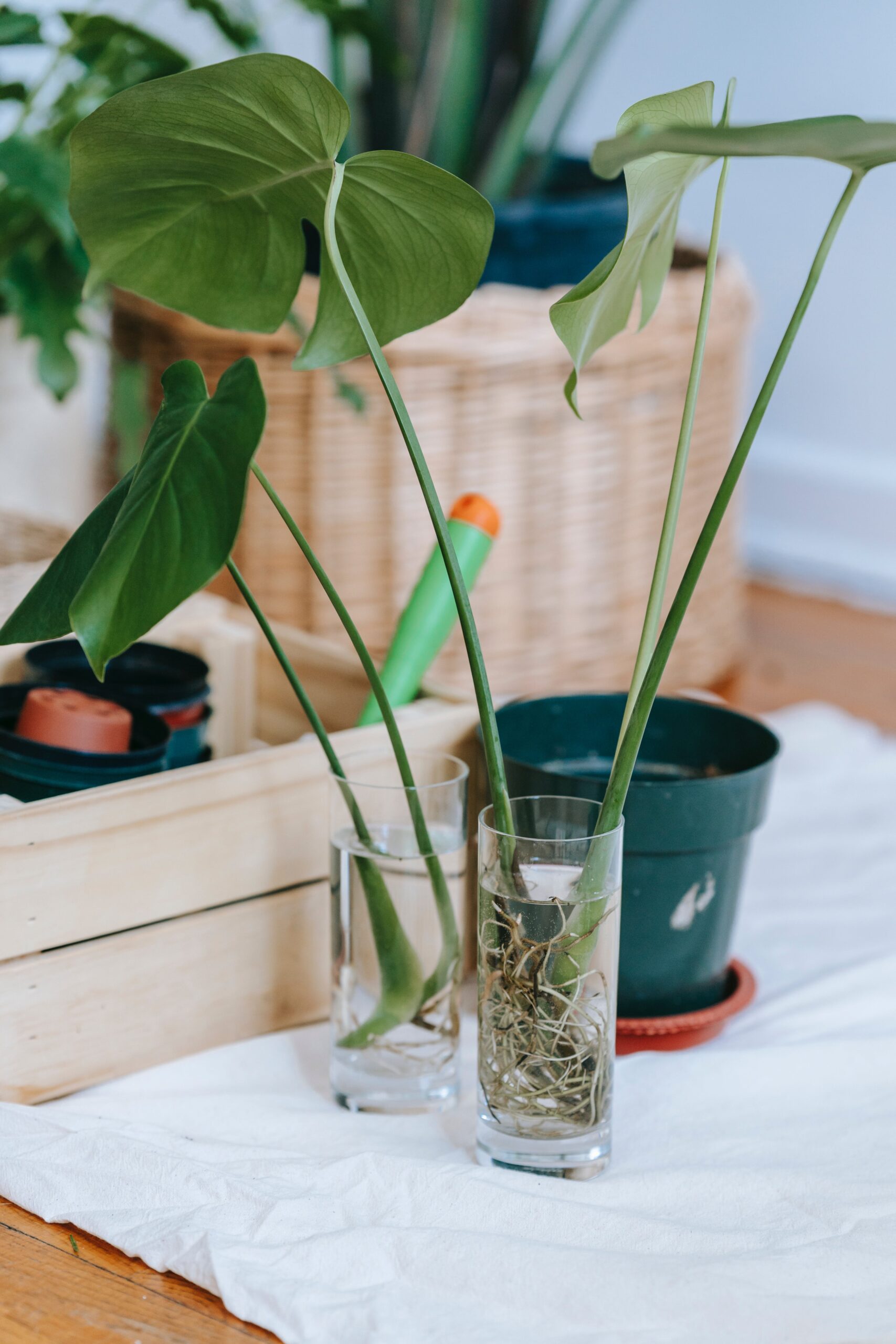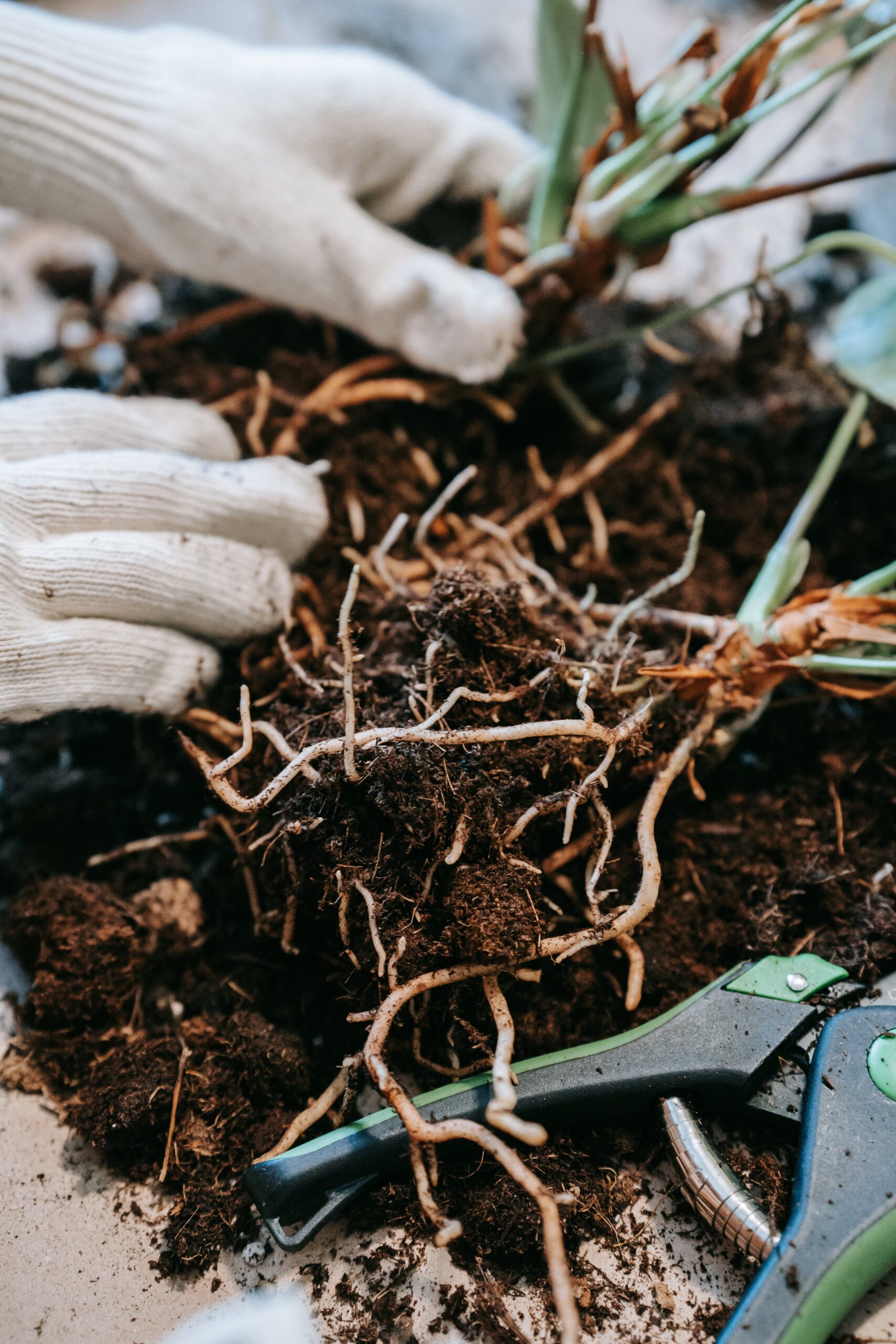

By Laurel Aiello | Fort Collins Nursery
The only thing better than buying new houseplants is propagating them for free. In fact, one of the great joys of plant parenthood is being able to trade cuttings with other green thumbs or sharing the love with friends and family. While houseplant propagation methods vary, these tips will help you multiply your plants at home.

Water Propagation
An easy way to propagate houseplants is by trimming their stems or vines and placing them in water. Some of the best houseplants to propagate in water are Epipremnum spp. (pothos), Philodendron spp., Tradescantia spp. (inch plant), Begonia spp. and Syngonium spp. (arrowhead vine).
The trick is to cut between the nodes—the nubs below the base of each leaf—and make sure at least one node is submerged in water. Remove the lower leaves so they don’t sink underwater and turn to mush, leaving a few up top to photosynthesize. Change out the water every few days to prevent bacteria growth.
Once the cutting has produced a significant amount of roots (usually after a few weeks), you can pot it in soil. The roots should take up two-thirds of the pot so they absorb moisture evenly when watered. At this stage, the roots are used to being wet, so you’ll need to water the plant more frequently until it acclimates to living in soil.
Leaf Cuttings
Some houseplants can be grown via leaf propagation, including Sansevieria spp. (snake plants), Zamioculcas spp. (ZZ plant), Peperomia spp. and succulents (particularly Echeveria spp.). For succulents, simply remove a whole leaf and lay it on top of the soil with the freshly detached end touching the potting medium. Mist it daily, and watch for a tiny succulent to emerge at the base of the leaf after several weeks.
Other leaf cuttings can be rooted in water, moss or soil with the help of a rooting hormone. Cut the leaf straight across and dip the wound in powder or gel rooting hormone, then submerge it in a shallow dish of water or damp potting medium. Keep it moist until a healthy amount of roots form, then transfer it to a pot following the same rules for potting up water propagations.

Dividing Houseplants
Several types of houseplants can be divided, or manually separated, into multiple plants. Examples include Pilea peperomioides (Chinese money plant) and Aloe spp.; you can gently remove their “pups” (the babies that pop up at the base of the plant) and repot them in their own tiny pots.
Houseplants with bulb-like rhizomes, such as ZZ plants, can be wiggled apart at the roots. Other houseplants can be divided if their root ball is easy to detangle, though some of the tougher, more mature plants can withstand a clean chop down the middle of the root ball.
Chlorophytum comosum (spider plants) are known for sending out shoots with little “spiderettes” that can be trimmed off and rooted in water. This method of separation doesn’t involve manhandling the mother plant’s roots, making the spider plant one of the easiest plants to propagate.
Support Northern Colorado Journalism
Show your support for North Forty News by helping us produce more content. It's a kind and simple gesture that will help us continue to bring more content to you.
BONUS - Donors get a link in their receipt to sign up for our once-per-week instant text messaging alert. Get your e-copy of North Forty News the moment it is released!
Click to Donate
